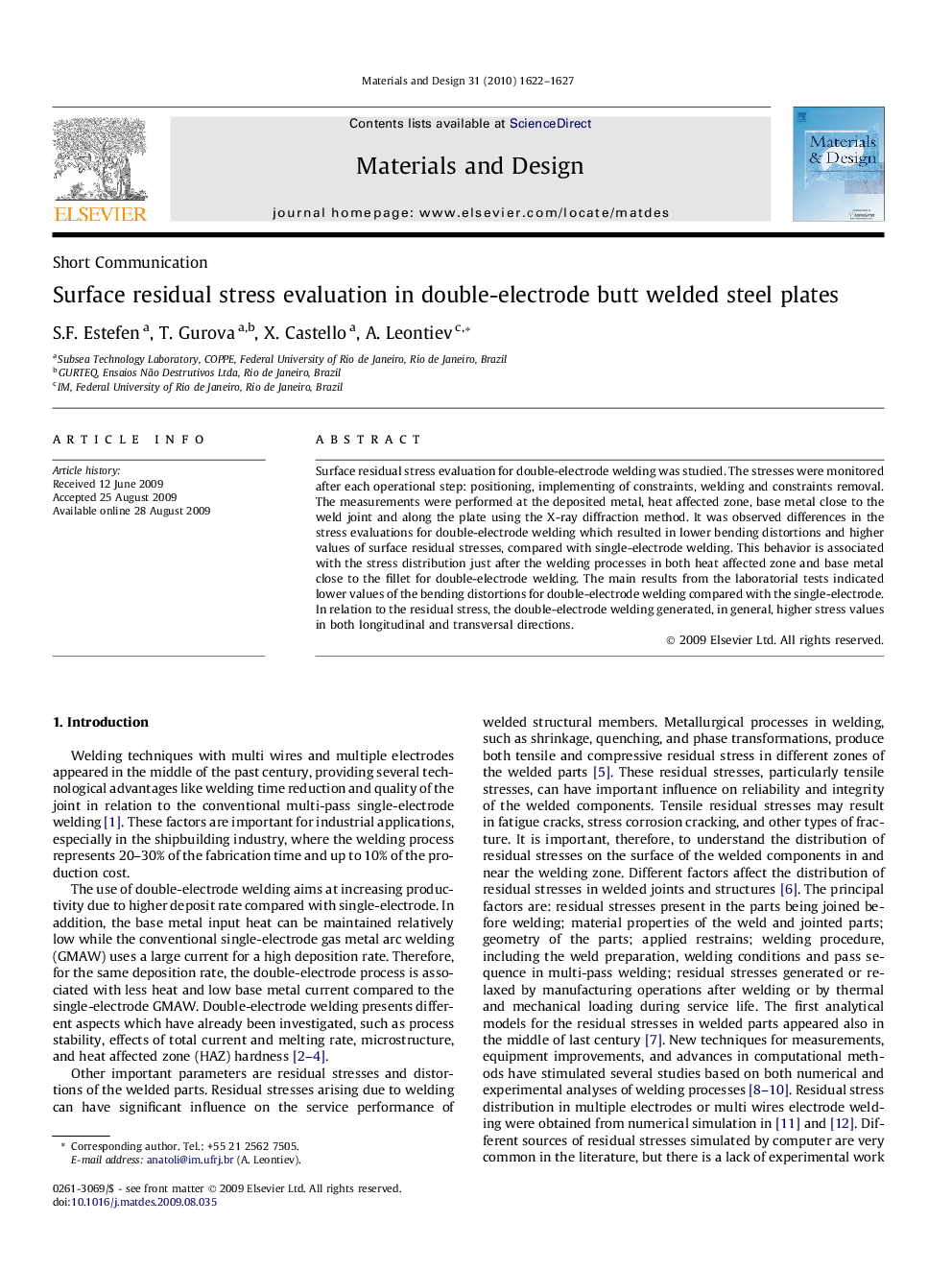| Article ID | Journal | Published Year | Pages | File Type |
|---|---|---|---|---|
| 832542 | Materials & Design (1980-2015) | 2010 | 6 Pages |
Surface residual stress evaluation for double-electrode welding was studied. The stresses were monitored after each operational step: positioning, implementing of constraints, welding and constraints removal. The measurements were performed at the deposited metal, heat affected zone, base metal close to the weld joint and along the plate using the X-ray diffraction method. It was observed differences in the stress evaluations for double-electrode welding which resulted in lower bending distortions and higher values of surface residual stresses, compared with single-electrode welding. This behavior is associated with the stress distribution just after the welding processes in both heat affected zone and base metal close to the fillet for double-electrode welding. The main results from the laboratorial tests indicated lower values of the bending distortions for double-electrode welding compared with the single-electrode. In relation to the residual stress, the double-electrode welding generated, in general, higher stress values in both longitudinal and transversal directions.
